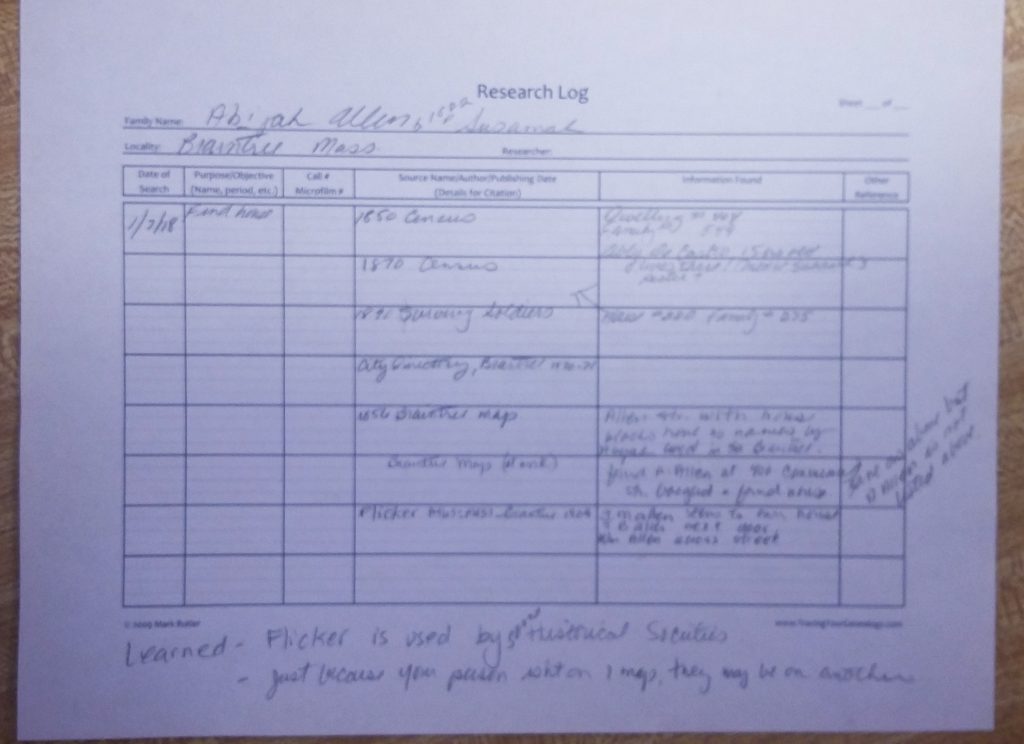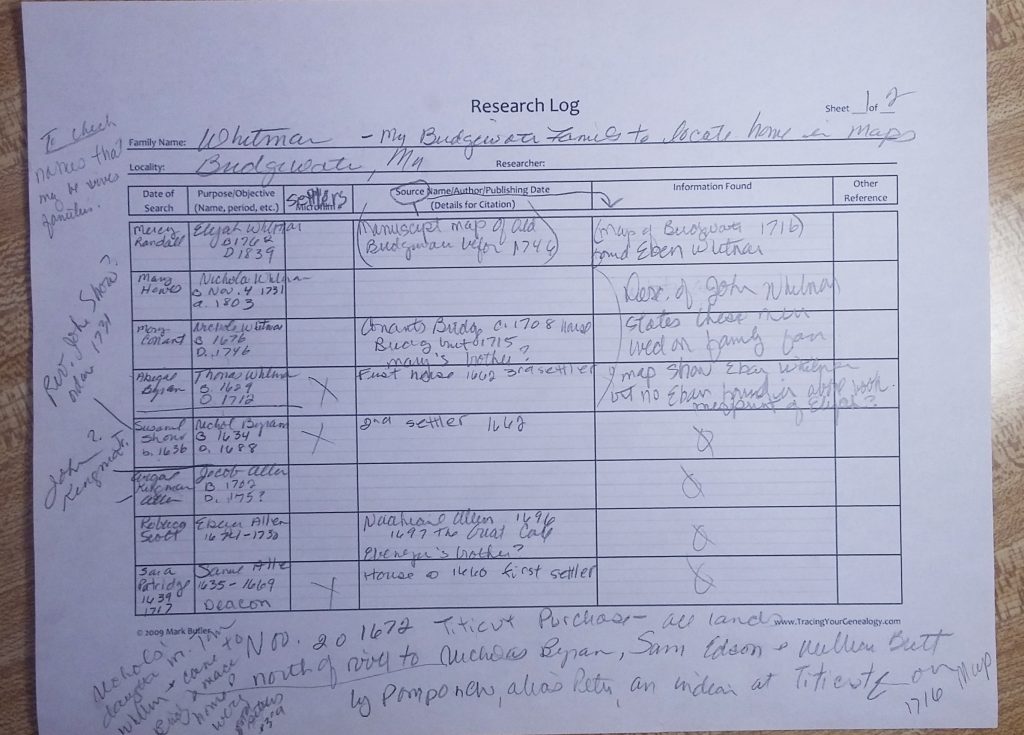If you read my previous post, then you would have read my praises on research logs. To summarize, I have little time to research and when I do have a couple hours, I spend half of it trying to figure out where I was, what I was doing and diving into notes that now only confuse me. A research log is a template that you fill out as you go. It’s defining characteristic is the “purpose/objective” column. You title what you are trying to do, then fill in the rows of where you went and what you found there. This has turned out to be a lifesaver for me. When I return to a file, I can take out its research log and see exactly what I was trying to accomplish and where I was in that search. Although it is certainly not a replacement for pages and pages of notes, it is a framework for those notes. It is like marking your trail with breadcrumbs. You can read where you were going and how far you got.
Here is this log, you can see that my objective was to identify Abijah Allens home. And in the middle column you can see that I listed sources that I had searched.

As if that wasn’t a enough of a gift to my research life, I have discovered a further use of the template. I discovered that it also works for group investigation. For instance, I have two separate unrelated lines of family that resided in East Bridgewater, Massachusetts, each for multiple generations. Also, I found a couple of vintage maps of the town that name residents and their house lots. Not all maps name all people but I would like to find as many ancestral homes as possible.
What I managed to do was under the purpose/objective column, I made a list of every head of household that lived in East Bridgewater. Then I used the wider columns to respond to each map. With a map in hand, I simply went down the column of names and checked off if they were listed on that particular map or not.
And since in genealogy, we often run into secondary information that can distract us from our focused path, I was able to use the margins for secondary info that I ran into on the map. This kept the secondary info neatly out of the main body of which I was focused on but available for later attention.

This is going to work well in a number of ways.I have quite a number of towns that had many family members living there for multiple generations. I also have cemeteries, church records, more maps, schools, etc that can be searched in this way.
Normally I research individually but now when I acquire, for example, a church’s records in a particular town, I can in the same way, list my ancestors that lived in that church area, and then go down the list and check off who is mentioned there or not. I can then add the Research Log to that towns file so I can see what I already researched.
I am learning how to better organize my research and that makes me much more productive in that work.
Thanks for reading.
Views: 610
Hello. Your Blogiversary is coming up. Please email me at geneabloggerstribe.shannon@gmail.com so I can send you the form to fill out. Thank you!
Shannon
GeneaBloggersTRIBE
GeneaBloggersTRIBE website link — http://geneabloggerstribe.com
Thank you, I’ll skip it this year as I have done a terrible job. I work so much, I struggle to find time. I hope to make a difference and hopefully next year will feel worthy of the event.